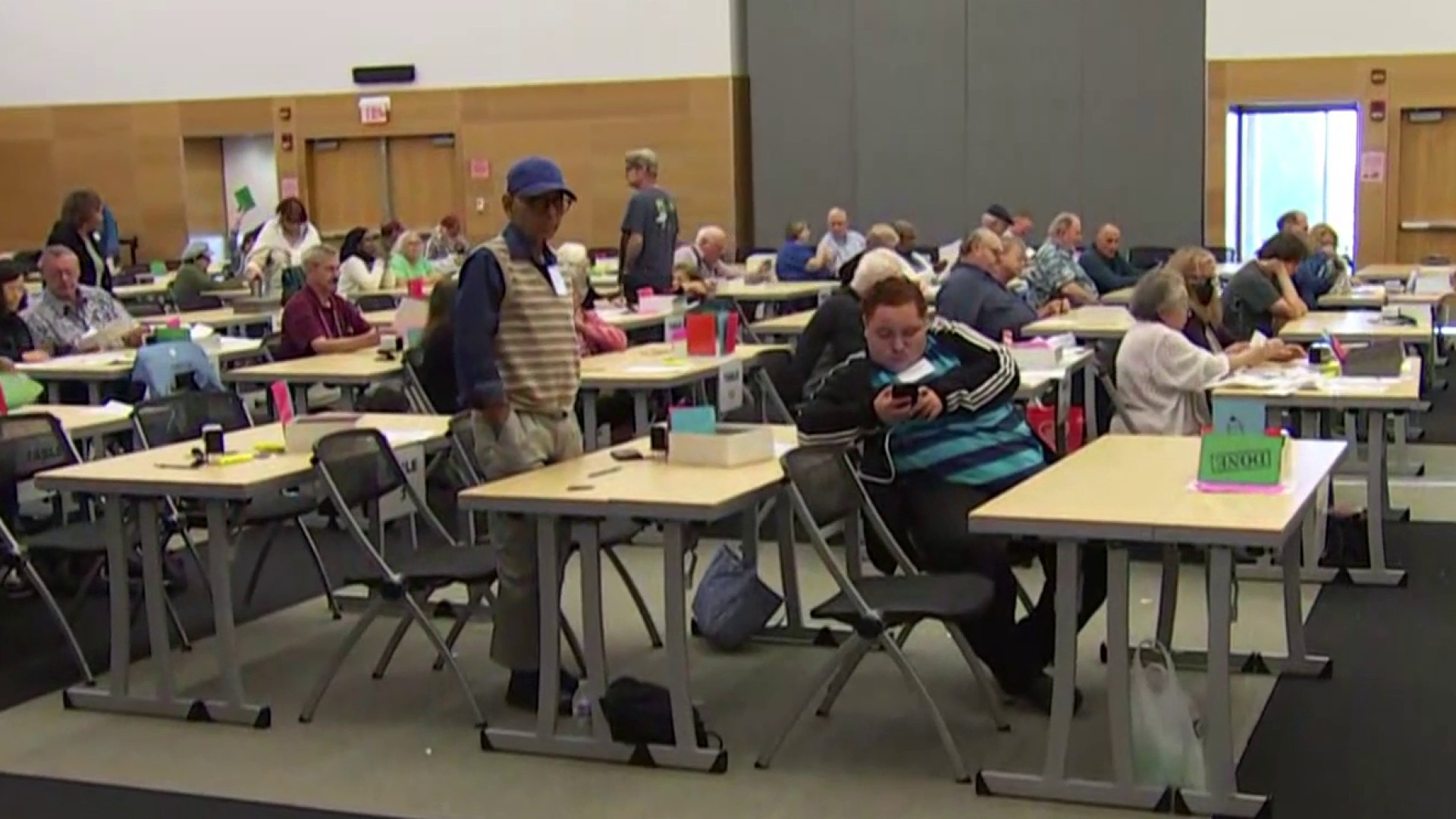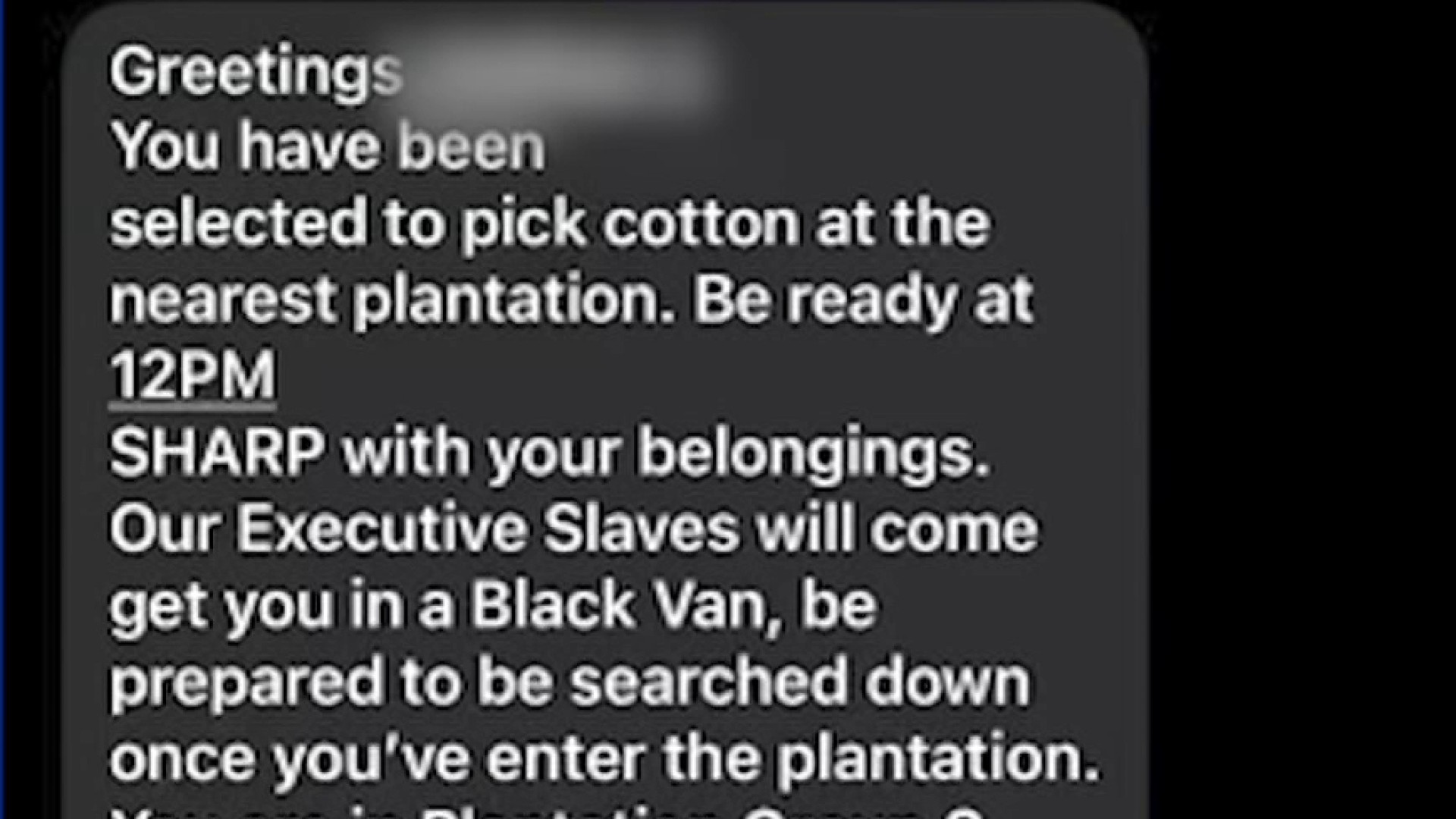Just across 50th Street NE from Marion Langston’s well-kept Deanwood home is one that couldn’t be more different. Vine covered and open to the elements, the blighted property is an eyesore to the neighborhood.
Long ago, Langston knew the family who lived there. Now that family is a memory, the property is abandoned, and Langston is worried.
“It's a danger, but I just pray every day that won't come by me,” she said.
Across D.C., the News4 I-Team found 291 blighted homes in D.C. property records – homes that, by law, are unsafe, unsanitary or a threat to our health, safety and welfare. The property on 50th Street NE is one of them and has been on the D.C. list for 10 years. That, too, isn’t rare. The I-Team found 95 D.C. homes listed as blighted for a decade but still standing in neighborhoods all over the District.
Vershelle Robinson-Ross lives nearby, just two doors down from another of the decade-long eyesores. She said she’s called the city worried about safety.
“I had to call and have it boarded up because kids go in and out the house,” she said.
Local
Washington, D.C., Maryland and Virginia local news, events and information
The property is just across from a school. Now, after what she says is a 15-year wait for change, she’s fed up.
“It matters to everybody else who lives around here, but there's nothing that is being done about it,” she told the I-Team. “At some point, you just … you get tired.”
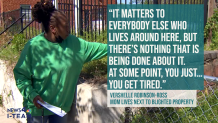
Both Langston and Robinson-Ross are in D.C.’s 6th Police District where the I-Team found the most blighted buildings. Thirty of them in a small area; almost a third of them on the problem list for a decade.
That property on 50th Street has a $190,000+ tax bill after not paying for years. In 2018, a D.C. inspector hung a sign on the fence of that property that the home could soon be torn down. Five years later, the sign is still there and so is the blighted house.

The problem is larger than just what neighborhoods look like. D.C. has a housing shortage. According to a U.S. Department of Housing and Urban Development report last year, as many as 36,000 families in D.C. alone could be waiting for affordable housing. The official waiting list however has been closed for a decade, so the real need could be even larger. Council Chairman Phil Mendelson is insistent homes like those on the I-Team’s map can be cleaned up and once again made useful.
“The inspector should be looking and saying, ‘That property shouldn't be like that, and we're going to make sure that it's taxed, and we're going to look at other tools to see if we can get that property back in use,’" Mendelson said.
He said he was alerted to the problems of blight on a visit to a decrepit Northwest D.C. apartment building. Forty units, he said, that “could be rental housing.”
Years later, the building he first saw years ago still isn’t in usable condition, and neighbors there are fed up as well.
“It’s been derelict for way longer than seven years,” neighbor Heather Williams said.
These days bricks are missing up high, windows are broken down low, and a sign says the city stopped work on some project in 2017. D.C. records show it was noted vacant since 2014.
“Let's shame the government, because this is wrong,” Williams said. “This is very, very wrong.”
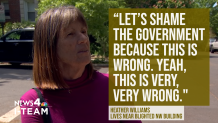
D.C.’s primary tool to clean up vacant and blighted homes is higher property tax rates. Livable homes pay the lowest rate. Vacant homes pay five times the normal rate, and a blighted property is billed 10 times the normal property tax rate. That is supposed to incentivize owners to clean up these eyesores, but it doesn’t always work.
D.C. has almost 3,000 vacant properties that could be put back in use with less effort than a blighted property. Vacant properties are just empty, but not on the rental or sales market.
Complicating enforcement even more, D.C. has been criticized in the past for not always keeping up with the higher rates.
The I-Team found that, too. In the example on 50th Street, the home has been listed in tax records as blighted, vacant and residential all without any noticeable repairs. Once the I-Team brought it to Mendelson’s attention, the Department of Buildings once again listed it as blighted and taxed it accordingly.
“They can fix it retroactively, but it shouldn't be on you (the I-Team) to figure this out,” Mendelson said.
The I-Team asked D.C.’s Department of Buildings repeatedly over weeks via email how that occurred. It is correct now, but we never heard how or why it was wrong in the first place.
As for the larger issues, a spokesperson for the Department of Buildings said, “At this time, the average length of time for a property to remain on the vacant list or returned to productive use is 2.9 years. Despite higher tax rates being applied, some property owners choose (to) keep properties vacant.”
On the larger issue of persistent eyesores, D.C. Mayor Muriel Bowser is comfortable with her record.
“I think to suggest that vacant and blighted buildings are a part, are a problem specific to the district is quite wrong,” she told the I-Team at a recent Department of Buildings event.
“I have a long history of working on vacant and blighted property in the District,” she added.
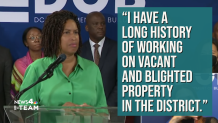
But the I-Team found if Bowser has her way, there will be fewer inspectors to catch these homes.
Her budget proposes cutting inspectors from 10 to eight.
The Department of Buildings says don’t worry, they don’t need more. A spokesman said, “The mayor’s proposal to eliminate unfilled inspector positions has no impact. D.C. has one of the highest number of inspectors per capita with 14 vacant building inspectors and supervisors and an additional on demand pool of 34 contractors.”
Reported by Ted Oberg, produced by Rick Yarborough, shot by Steve Jones and Jeff Piper, and edited by Steve Jones.

